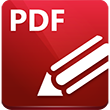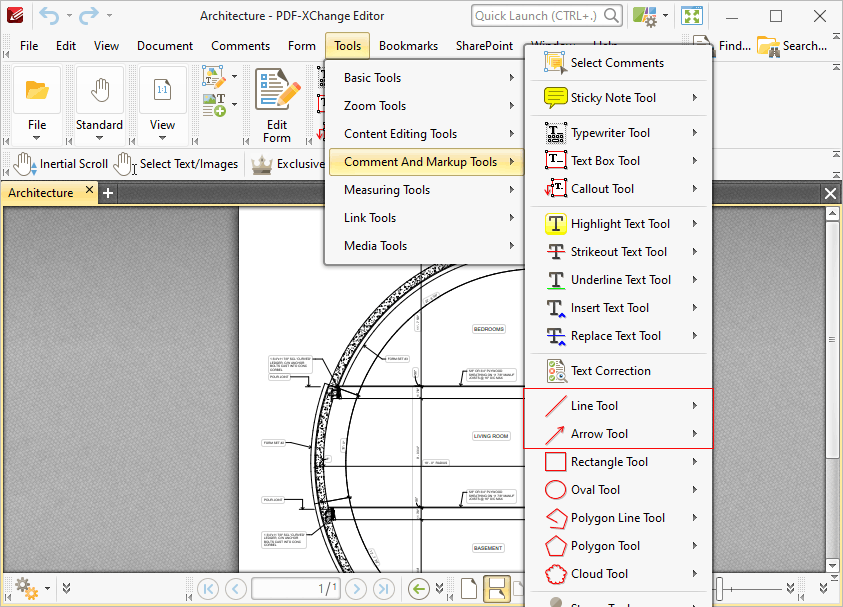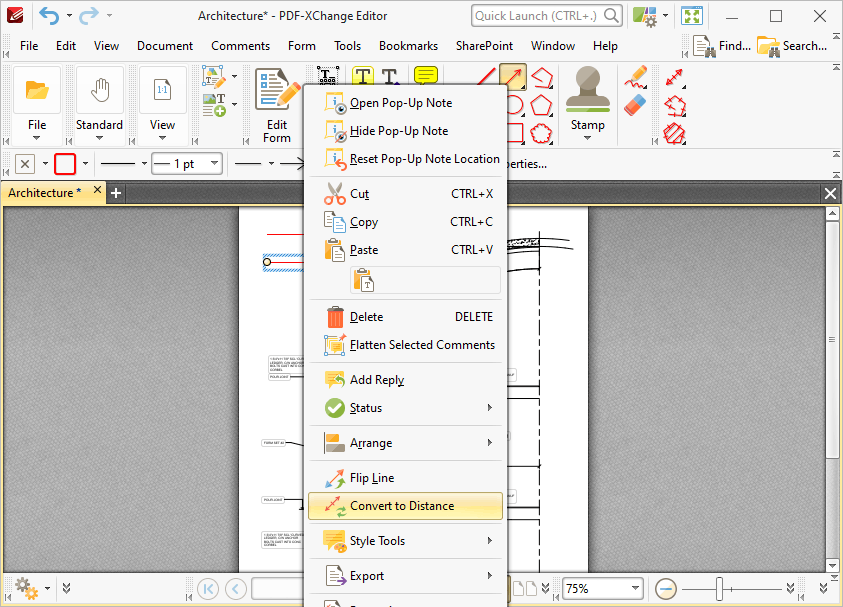 Line and Arrow Tools
Line and Arrow Tools
Click Line Tool or Arrow Tool to select these tools:

Figure 1. Tools Tab Submenu. Line and Arrow Tools
These tools operate in an identical manner and are used to annotate documents - the Line Tool adds line annotations and the Arrow Tool adds arrow annotations. When these tools are selected the pointer becomes a crosshairs icon. Click to initiate a line/arrow. Drag to the desired location and click to complete the operation:

Figure 2. Line and Arrow Examples
The arrow has just been placed, which means editing options are enabled:
•Click and drag the control points to reposition line endings.
•Click and drag content to reposition it.
•Use the arrow keys to reposition lines/arrows. Hold down Shift to move at an increased increment.
•Use the editing aids detailed here to assist in the precise placement of lines/arrows.
•Right-click content for further options. See here for an explanation of these options.
•Hold down Shift to create lines/arrows at increments of fifteen degrees.
•When the Line/Arrow Tool is selected, the following options are enabled in the Properties Toolbar:
•Fill Color determines the fill color of the Line Starting/Ending Styles, detailed below, when closed-shape options are used.
•Stroke Color determines the content color.
•Border Style determines the content style.
•Border Width determines the size of the Line Starting/Ending Styles, detailed below.
•Line Starting Style determines the style used at the start of lines/arrows.
•Line Ending Style determines the style used at the end of lines/arrows.
•Opacity determines the level of transparency.
•Blend Mode determines how content blends with underlying content. These options are explained here.
•Keep Selected determines whether or not the Line/Arrow Tool remains selected after an annotation has been created. If this option is enabled then the tool will remain selected and can be used to create several annotations consecutively. If this option is not enabled then PDF-XChange Editor will revert to the designated default tool immediately after creating a single annotation.
•Exclusive Mode simplifies the process of using the Line/Arrow Tool. When Exclusive Mode is enabled, the pointer ignores all interactive elements of documents other than base content. This makes it possible to create content on areas that overlap with other content without the risk of accidentally selecting undesired items. When Exclusive Mode is disabled, the pointer recognizes and interacts with all underlying elements in the usual manner.
•Click Properties to view/edit the Line/Arrow Tool Properties pane. See here for information on tool and comment properties.
•Note that several default styles are available for lines and arrows. Right-click the Line or Arrow icon in the Comment Toolbar to view existing styles and/or access the Comment Styles Palette, which can be used to save customized line and arrow styles for subsequent use.
•The Commenting section of the Preferences dialog box can be used to view/edit preferences for comments.
Convert Line Annotations to Distance Annotations
If you want to convert line annotations to distance annotations, then right-click the line annotation and click Convert to Distance:

Figure 3. Right-Click Shortcut Menu, Convert to Distance Highlighted
The line annotation will then convert into a distance annotation. Note that it is possible to convert multiple annotations at the same time.